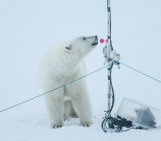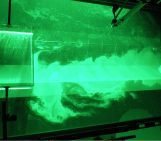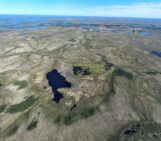
At first glance our image of the week may look like an ordinary stoney beach…but if you look more closely you will see that this beach is not, in fact, covered in stones or pebbles but balls of ice! We have written posts about many different weird and wonderful ice formations and phenomena (e.g. hair ice or ice tsunamis) here at the EGU Cryosphere blog and here is another one to add to the list – ice balls!
During the northern hemisphere winter these naturally formed balls of ice have been found on several Arctic shores; as well as Estonia there have been reports of them in Russia, North America and Northern Germany. There are even photos of “ball ice” in the Great Lakes from a 1966 book of aerial photography published by the University of Michigan. However, they are still a rare occurrence, surprising and delighting onlookers when they appear.
How do they form and why are they not seen more often?
These ice balls are thought to form from ice slush, which is amalgamated by turbulent water to form rough lumpy ice masses – similar to the way you would roll a small snow ball into a much larger one to form a snow man. The ice masses are then rounded into the smooth spherical shapes you see in our image of the week by wave action rolling them around in shallow water near the shore (see video below). This is much the same way as pebbles on a beach are smoothed and rounded – it just happens a lot faster with ice balls than solid pebbles!
It seems that the right combination of wind strength, wind direction, sea temperature and coast line shape are needed to form these features and then bring them on to the shore. For all of these things to occur at the same time is rare and special!




